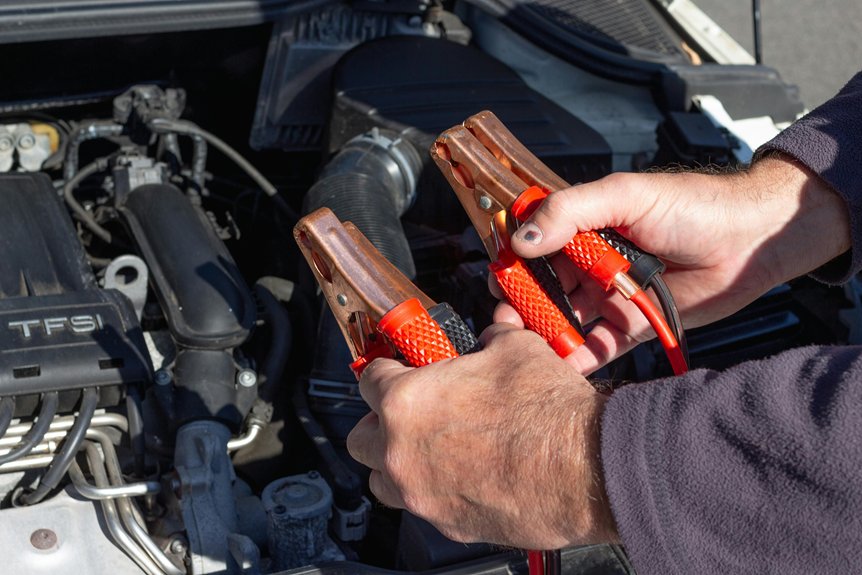Maintaining your vehicle’s transmission can be manageable if you stick to basic tasks, but it’s important to know where to draw the line. While checking and changing the transmission fluid or inspecting for leaks might be within your skill set, tackling complex repairs or system flushes could do more harm than good. Understanding what you can and can’t do helps protect your car and your wallet—so, what are the key boundaries to keep in mind?
Checking and Changing Transmission Fluid
Checking and changing your transmission fluid is a crucial step in maintaining your vehicle’s performance. Over time, fluid can become contaminated with dirt, debris, or metal shavings, which impairs transmission operation and may lead to a costly transmission rebuild.
Regularly inspecting the fluid’s color and smell helps identify contamination early. If the fluid appears dark or burnt, it’s time for a change.
Draining and replacing old fluid ensures smooth shifting and prevents damage. Keep in mind that neglecting this maintenance can cause serious issues, so don’t delay.
Proper fluid care keeps your transmission running efficiently and helps avoid expensive repairs down the line.
Inspecting Transmission Fluid Levels
Maintaining the correct transmission fluid level is essential for your vehicle’s proper operation. To check it, park on a level surface and start the engine, then locate the transmission dipstick. Pull it out, wipe it clean, then reinsert and remove it again to read the fluid level.
Pay attention to the fluid color; healthy fluid should be pink or red and translucent. If it’s dark or smells burnt, it may indicate a problem.
Also, inspect around the transmission for leak detection signs—fluid spots or drips. Regularly checking these levels helps prevent transmission issues and keeps your vehicle running smoothly.
Replacing the Transmission Filter
Replacing the transmission filter is a crucial step in ensuring your transmission stays clean and functions smoothly. A DIY transmission filter change helps remove debris and old fluid, preventing clogs and wear.
To start, locate the filter, usually near the transmission pan, then drain the fluid and remove the pan.
Carefully take out the old filter, noting its position.
Install the new filter securely, replace the pan gasket, and refill with fresh transmission fluid.
Remember, a proper transmission filter replacement extends your transmission’s lifespan and improves performance.
Take your time, follow your vehicle’s manual, and avoid rushing to ensure a successful DIY transmission filter change.
Flushing the Transmission System
Have you ever wondered if your transmission is running as smoothly as it should? Fluids can become contaminated over time, affecting performance and causing damage. A transmission flush procedure helps remove old, contaminated fluid and replaces it with fresh fluid, improving efficiency.
While a basic flush might seem straightforward, it’s important to follow proper procedures to prevent issues. You’ll need the right tools and a clear understanding of your vehicle’s system.
Adjusting Transmission Linkages
Ever wonder if your transmission shifts smoothly? You might need to check your gear linkage. Manual adjustments can often fix misaligned or sloppy shifts.
First, locate the gear linkage connected to your transmission. Carefully loosen the lock nuts, then shift into specific gears to see if the linkage moves smoothly. Adjust the linkage so it aligns perfectly with the gear shift positions.
Tighten the lock nuts securely. Remember, precise adjustments are key—too tight or too loose can cause shifting issues.
Regularly inspecting and tweaking your gear linkage helps ensure smooth gear changes and prolongs your transmission’s lifespan.
Diagnosing Transmission Problems
Diagnosing transmission problems starts with paying close attention to how your vehicle shifts and responds. Notice if you hear unusual transmission noise, such as whining or grinding sounds, especially when shifting gears.
Pay attention to any gear slipping, where the transmission unexpectedly shifts or struggles to stay in gear. These signs can indicate issues like low fluid levels, worn clutches, or damaged bands.
Keep track of when problems occur—during acceleration, deceleration, or at specific speeds. Early detection helps prevent further damage.
While some symptoms may be manageable, avoid ignoring persistent issues, as they often require professional diagnosis and repair. Recognizing the signs of transmission trouble early can help you decide when to seek trusted repair services for long-term reliability.
When to Seek Professional Transmission Service
Knowing when to seek professional transmission service is essential to prevent costly repairs and further damage. If your vehicle exhibits slipping gears, delayed shifting, or unusual noises, it’s time to consult a pro.
Transmission software updates or diagnostics often require specialized equipment and expertise. Ignoring warning signs can void your transmission warranties or cause more extensive damage.
Even if you’ve performed DIY maintenance, some issues are beyond your skill set. When in doubt, trust a professional to diagnose and repair problems thoroughly, ensuring your transmission runs smoothly and remains under warranty.
Prompt professional service saves you money and extends your transmission’s lifespan.
Conclusion
Performing your own transmission maintenance can save money and deepen your understanding of your vehicle. You can handle simple tasks like checking fluid levels and replacing filters if you have the right tools and knowledge. However, for complex issues or system flushes, it’s best to trust professionals. Know your limits, follow your manual, and prioritize safety. When in doubt, don’t hesitate to get expert help to keep your transmission running smoothly. To schedule your free TransScan or to book an appointment, call us today at (919) 471-2506 or visit us online at Durham Transmission.

